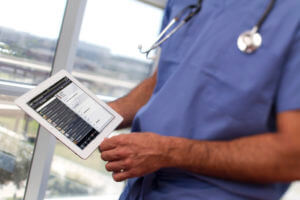Bridging the Gap in Health Care PR — It’s Up to Us!
Published on February 23, 2017, at 1:25 p.m.
by Julia Cione.
With the advancement of technology and medicine, the need for public relations practitioners has grown in the health care industry. Generally, it is not a well-known field for PR practitioners to immediately dive into, but for Rachel Welch, health care PR professional in Austin, Texas, it was her father’s career as a doctor that inspired her to dive into the industry.
“I saw firsthand how it helps to have a ‘translator’ to help humanize the amazing science that health care professionals are practicing on a daily basis,” Welch said.
The role of public relations is extensive in the health care industry.
“PR can help health care professionals by crafting and telling the stories of what happens inside clinics, research labs and hospitals every day,” Welch said. “PR can also play a role in reputation management and crisis management — for instance, when Dallas saw an Ebola case or some Southern states dealt with the Zika virus, PR was instrumental in getting the facts out and providing accurate information so citizens could protect themselves.”

When figuring out how to describe medical advancements or recent news about the health care industry, one must be able to wrap their minds around the product first. Doctors spend at least eight years of their lives in school to be able to successfully do their jobs. So in order to be able to communicate their complex knowledge of medicine, you must put yourself in their shoes.
Dr. Carrasco, a robotic physician in Dallas, explained that everyone loves a hungry student. “These PR professionals should commit to spending time with doctors and go hang out in the O.R. — we don’t see a lot of that,” Dr. Carrasco said. This type of interaction would likely lead to bridging the gap between the doctors and the communicators.
How can PR professionals, as individuals not educated in the medical world, translate this knowledge in a way that is effective and understandable?
“In my experience, I had to build up a little institutional knowledge to be an effective health care PR professional. But once I did that, I found it incredibly rewarding,” Welch said. “When health care PR professionals do their jobs well, people receive real benefits — they learn about better treatments, new options or that they’re not alone. I truly felt lucky to do such meaningful work.”
According to Casey Boggs, president of Portland-based LT Public Relations, health care organizations need to act fast in showcasing their value to the public. If the organizations do not, it is difficult and expensive to make large-scale changes in their communication efforts to the audience.
“One market that has done well in drawing people in is this ‘natural organic eating idea’ because people want to be healthier,” Dr. Carrasco said. “If there’s a way to tie this to emphasizing more knowledge in medicine, then there wouldn’t be a major disconnect between the doctors and general public.”
For example, REI’s #OptOutside campaign by Edelman was a great tool to emphasize the importance of doing activities outside. Medical innovations, such as robotic surgery that Dr. Carrasco specializes in, could be developed into phenomenal campaigns directed toward educating and emphasizing the importance of being aware of these changes in medicine.
There are so many different innovations happening daily in the medical world that people need to be educated about and made aware of in order to satisfy the need for constant knowledge of these changes.
“Technology is having a huge impact on medicine, from big data to electronic health records. Health care PR professionals should work with technology PR specialists to understand these developments and prepare for the risks and benefits they carry,” Welch said.

Health care PR practitioners, both currently in the field and interested in being a part of the field, should take part in being the link.
“The best way to bridge this gap is having a really good working knowledge of what surgeons do and be able to communicate surgical knowledge and medical advancements,” Dr. Carrasco said. “There is a deficiency in the lack of understanding from these communicators because at times they don’t know what they’re talking about. But if you understand it and believe in the benefits, then it will remove the communication barriers and shed light on information that people need to know about.”





